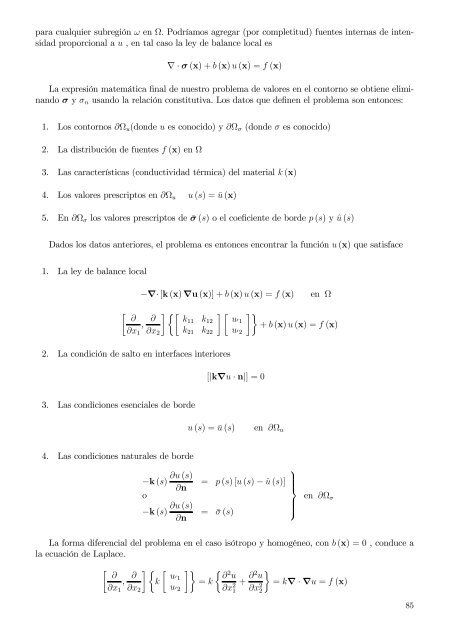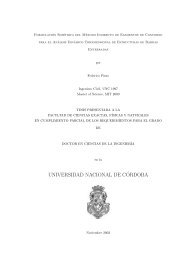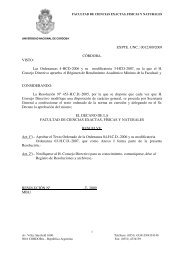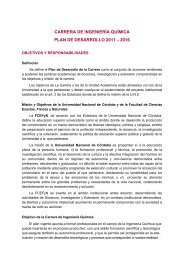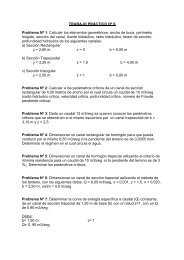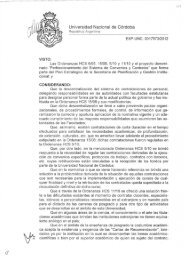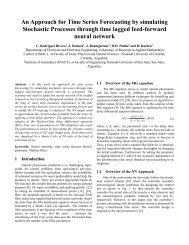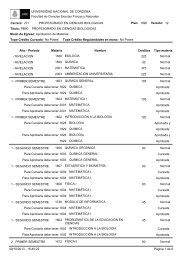Capítulo 1 Métodos de residuos ponderados Funciones de prueba ...
Capítulo 1 Métodos de residuos ponderados Funciones de prueba ...
Capítulo 1 Métodos de residuos ponderados Funciones de prueba ...
You also want an ePaper? Increase the reach of your titles
YUMPU automatically turns print PDFs into web optimized ePapers that Google loves.
para cualquier subregión ω en Ω. Podríamos agregar (por completitud) fuentes internas <strong>de</strong> intensidad<br />
proporcional a u , en tal caso la ley <strong>de</strong> balance local es<br />
∇ · σ (x) + b (x) u (x) = f (x)<br />
La expresión matemática final <strong>de</strong> nuestro problema <strong>de</strong> valores en el contorno se obtiene eliminando<br />
σ y σ n usando la relación constitutiva. Los datos que <strong>de</strong>finen el problema son entonces:<br />
1. Los contornos ∂Ω u (don<strong>de</strong> u es conocido) y ∂Ω σ (don<strong>de</strong> σ es conocido)<br />
2. La distribución <strong>de</strong> fuentes f (x) en Ω<br />
3. Las características (conductividad térmica) <strong>de</strong>l material k (x)<br />
4. Los valores prescriptos en ∂Ω u u (s) = ū (x)<br />
5. En ∂Ω σ los valores prescriptos <strong>de</strong> ¯σ (s) o el coeficiente <strong>de</strong> bor<strong>de</strong> p (s) y û (s)<br />
Dados los datos anteriores, el problema es entonces encontrar la función u (x) que satisface<br />
1. La ley <strong>de</strong> balance local<br />
−∇· [k (x) ∇u (x)] + b (x) u (x) = f (x)<br />
en Ω<br />
[ ] {[ ] [ ∂ ∂ k11 k<br />
,<br />
12 u′ 1<br />
∂x 1 ∂x 2 k 21 k 22 u′ 2<br />
2. La condición <strong>de</strong> salto en interfaces interiores<br />
[|k∇u · n|] = 0<br />
]}<br />
+ b (x) u (x) = f (x)<br />
3. Las condiciones esenciales <strong>de</strong> bor<strong>de</strong><br />
u (s) = ū (s)<br />
en ∂Ω u<br />
4. Las condiciones naturales <strong>de</strong> bor<strong>de</strong><br />
−k (s)<br />
o<br />
−k (s)<br />
∂u (s)<br />
∂n<br />
∂u (s)<br />
∂n<br />
= p (s) [u (s) − û (s)]<br />
= ¯σ (s)<br />
⎫<br />
⎪⎬<br />
⎪⎭<br />
en ∂Ω σ<br />
La forma diferencial <strong>de</strong>l problema en el caso isótropo y homogéneo, con b (x) = 0 , conduce a<br />
la ecuación <strong>de</strong> Laplace.<br />
[ ] { [ ∂ ∂ u′ 1<br />
, k<br />
∂x 1 ∂x 2 u′ 2<br />
]}<br />
{ ∂ 2 u<br />
= k<br />
∂x 2 1<br />
}<br />
+ ∂2 u<br />
= k∇ · ∇u = f (x)<br />
∂x 2 2<br />
85


